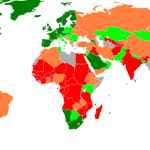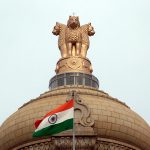GSLV- Mark III
- India, in the first week of June, will attempt to launch its heaviest and most powerful rocket yet.
- The 640-tonne Geosynchronous Satellite Launch Vehicle-Mark III (GSLV Mk III) has been worked on for more than 10 years.
- The 640-tonne rocket, developed over 10 years, has bigger cryogenic engine, said scientists at the ISRO.
- The notable aspect of this rocket is that the main and bigger cryogenic engine has been developed within India.
- As on today, ISRO has the capability to launch payloads of up to 2.2 tons and anything above that it had to tap Ariane or other launch facilities. This will be a significant move.
- The rocket’s design carrying capacity is four tons. The payload will be gradually increased in the future flights of the GSLV Mk-III.
- The Geosynchronous Satellite Launch Vehicle Mark III is a game changer capable of launching 4-tonne category of satellites from Sriharikota. It packs an Indian cryogenic third stage and higher payload as against the current GSLV.
Read in Hindi: इसरो जून में भारत का सबसे शक्तिशाली रॉकेट लॉन्च करने वाला है
About the satellite it will carry
- It will carry communication satellite GSAT-19.
- The satellite that it will put into orbit weighs 3.2 tons and will be the heaviest to be lifted by an Indian rocket.
- Apart from deploying advanced spacecraft technologies, the satellite would carry ka and ku-band payload along with a Geostationary Radiation Spectrometer that will help research space radiation.
Other rockets of ISRO
- India presently has two rockets – the Polar Satellite Launch Vehicle (PSLV) and GSLV-Mk II – with a lift-off mass of 415 tons and a carrying capacity of 2.5 tons.
- Earlier this month, the GSLV-Mk II was used to launch a communications satellite that Prime Minister Narendra Modi has gifted for sharing to neighbors in South Asia.
- The South Asia Satellite will offer participating countries television services and communications technology for bank ATMs and e-governance, and may even serve as a backup for cellular networks, especially in places where the terrestrial connectivity is weak.
Source: NDTV











